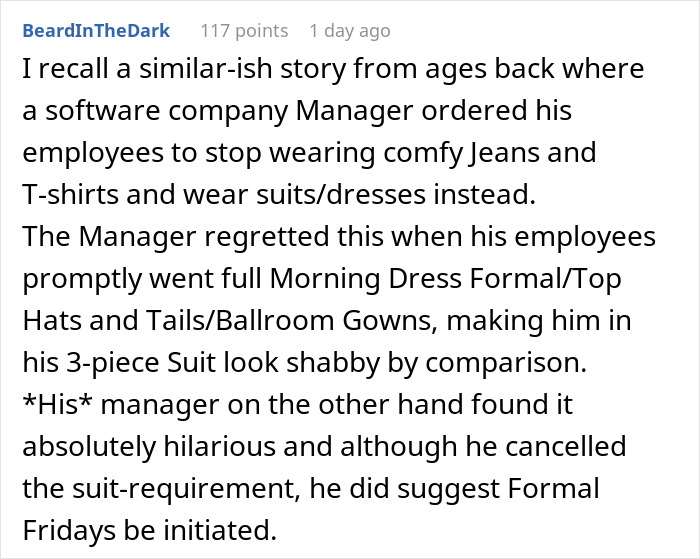Whether you’re hitting the keyboard at the office or driving a bus for the city, you have to dress up for the job appropriately.
But as Reddit user Comprehensive-Ice406‘s friend’s experience shows, that can be easier said than done.
Even though the woman tried to look presentable at the jewelry store where she worked, her boss decided she wasn’t doing enough, and told the employee she needed to improve her wardrobe and look prettier.
However, the subordinate found a creative way to maliciously comply and got back at her superior in style.
This woman’s boss would succumb to her emotions quite quickly, and during one of her episodes, she heavily critiqued the worker’s attire

Image credits: Alexander Suhorucov (not the actual photo)
Not to be outdone, the subordinate fired back with creative malicious compliance

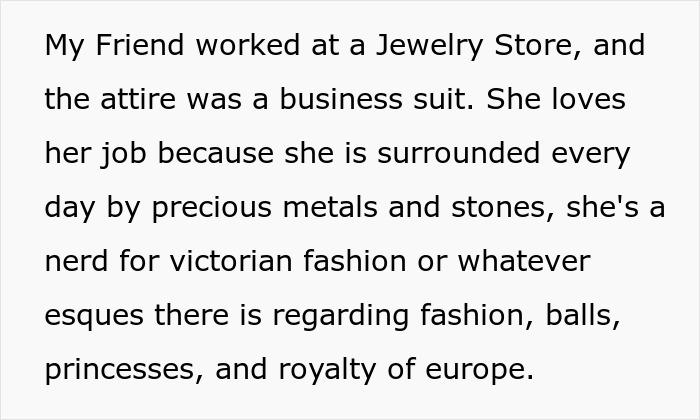

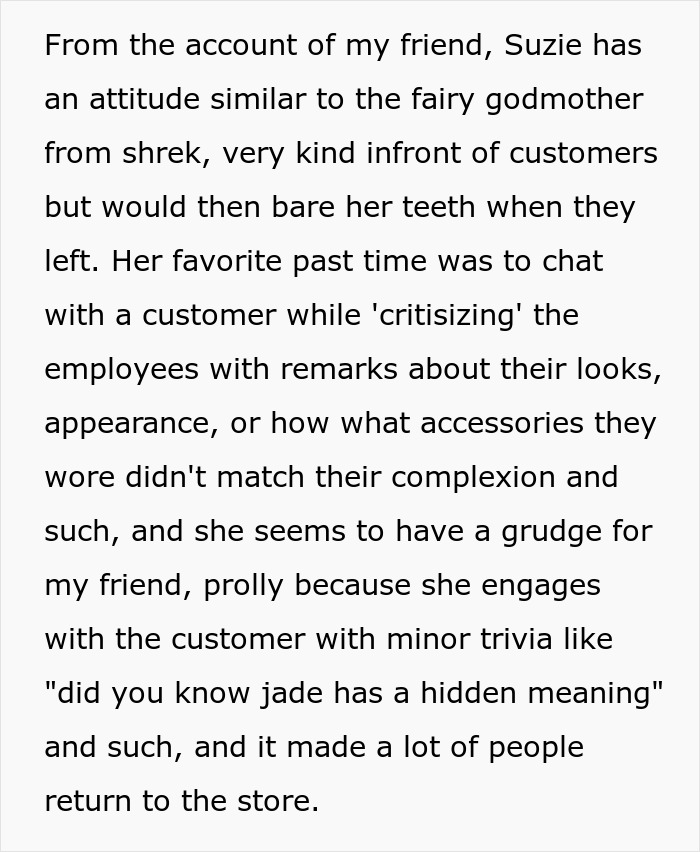
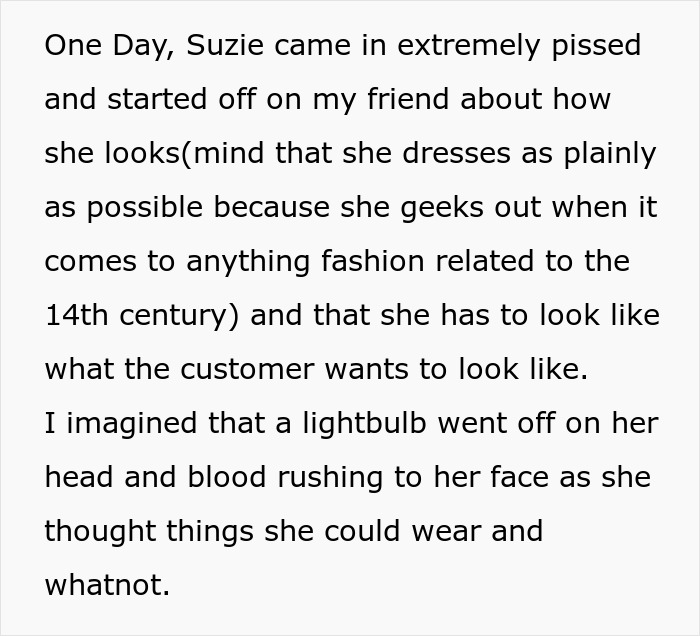
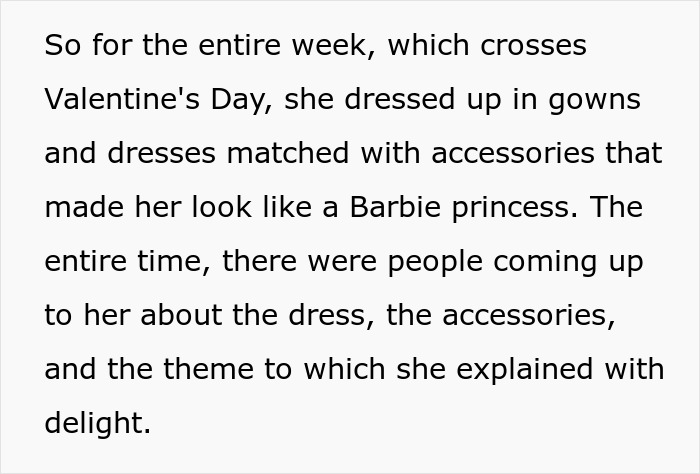
Image credits: Jane Bird (not the actual photo)
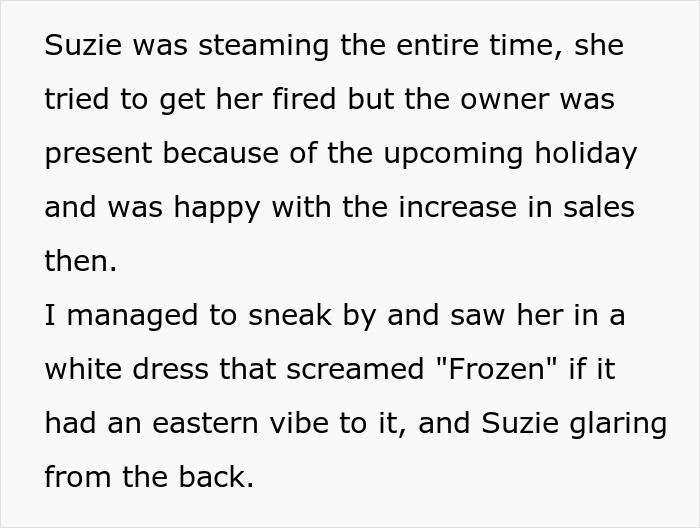
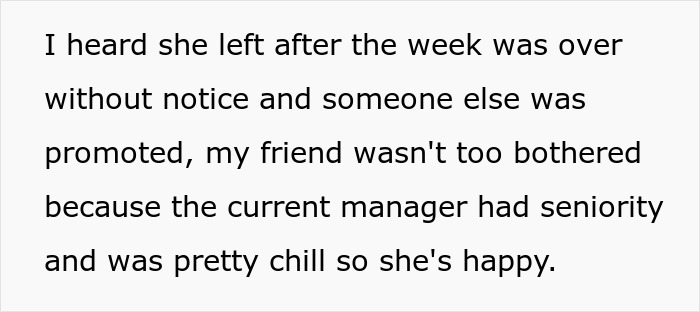
Image source: Comprehensive-Ice406
Clearly, an instruction to “look prettier” doesn’t sound like a professional one
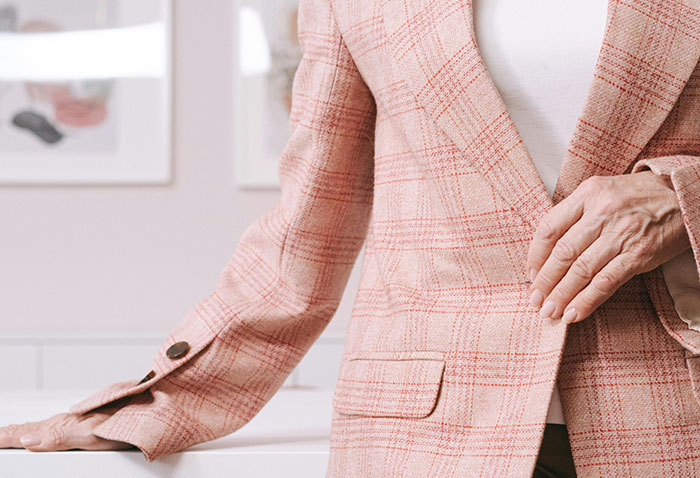
Image credits: Ivan Samkov (not the actual photo)
The vast majority of U.S. workers wear casual clothes on the job most days, with more than 7 in 10 saying their typical workplace attire is either business casual (41%) or more dressed-down, casual street clothes (31%).
Another 23% of workers say they wear a uniform at work most days, while just 3% say wearing business professional clothes is their norm.
When it comes to women in particular, a slim majority (51%) say they wear business casual clothing such as blouses, dress pants, dressy jeans, or skirts most days, while 30% don casual street clothing such as casual jeans, T-shirts, or leggings. Fewer women typically go to work in a uniform (14%) or business professional clothing such as suits or suit separates (3%).
There’s nothing wrong with a jewelry store manager thinking about its workers’ clothes per se.
According to research on employee apparel and shopper approach intentions, they do have an effect on the customers.
For example, participants in some studies were almost twice as likely to interact with a formally dressed employee (a hair salon employee wearing a white lab coat) as one who was informally dressed (white polo).
When researchers explored why this was, they learned that people viewed formally dressed employees as having more expertise than their casually dressed peers, which raised their expectations of getting better service.
However, judging from the Reddit post, it seems that Suzie was acting out of spite, not in the interest of the business.
The story prompted a lot of different reactions




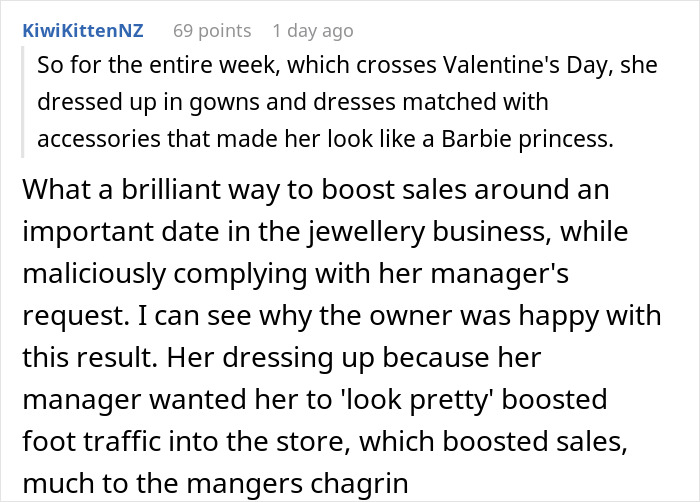






Some people also shared their own similar experiences
